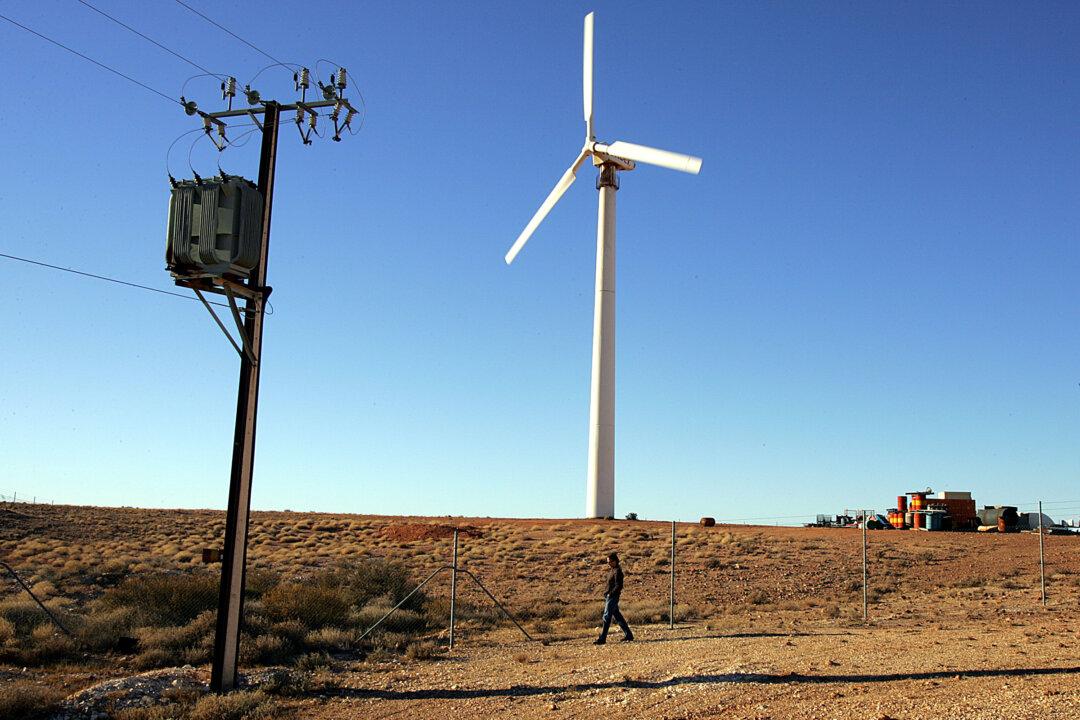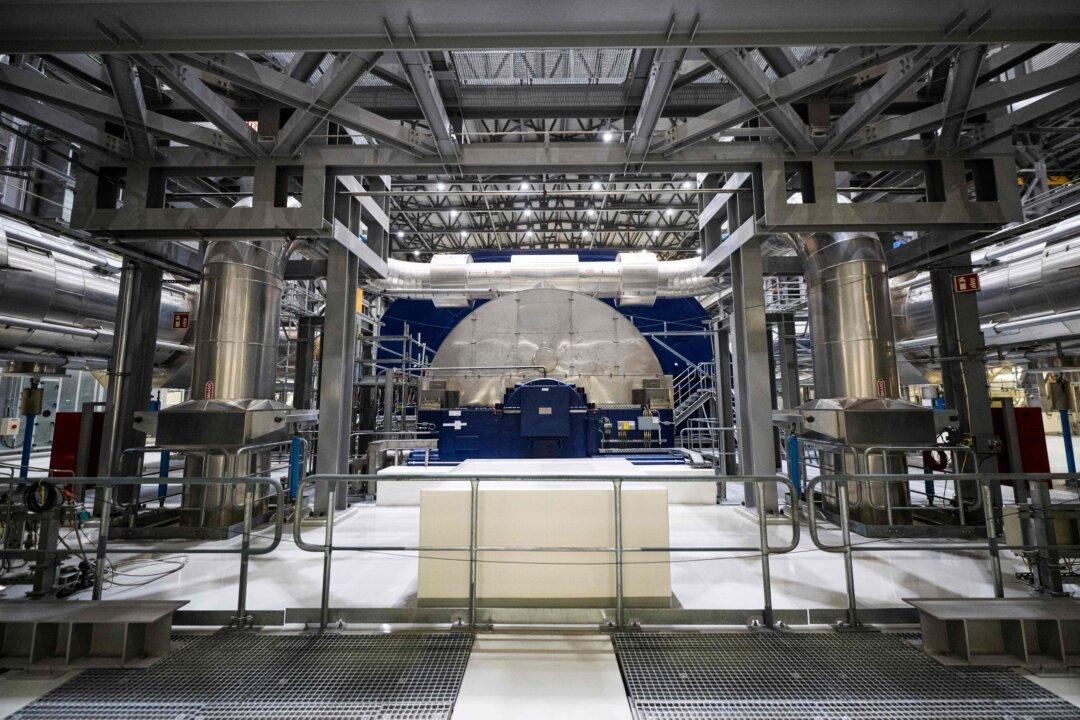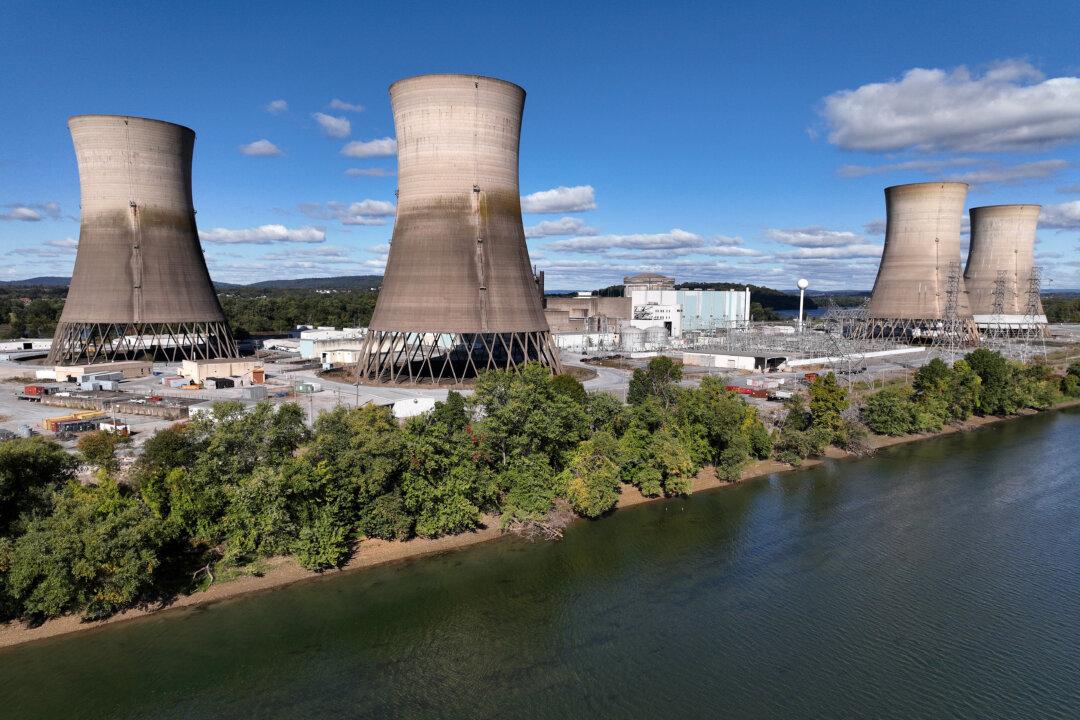A parliamentary committee has been told that the latest Integrated System Plan (ISP)—that incorporates renewables—and is supposed to underpin Australia’s energy grid for the next 20 years is a “work of fiction.”
At an inquiry hearing, former Australian Nuclear Science and Technology Organisation CEO Adrian Paterson raised concerns about the feasibility of the Australian Energy Market Operator’s (AEMO) plan.
According to the AEMO, the ISP is a “whole-of-system” plan that outlines the roadmap for the development of the National Electricity Market into the next two decades.
The ISP includes different scenarios and benchmarks for the country to reach net-zero.
“The systems plan that we are trying to put together is nothing other than a work of fiction dressed up in engineering clothes,” said Paterson.
Renewables’ Unreliable Outputs
The former CEO pointed out that wind and solar had unreliable output.“The capacity factor of wind, on the record in Australia, is just under 40 percent–it’s 37.5 percent,” he said.
“I'll convert that into days. That’s two days out of five when the wind blows.”
The capacity factor is a metric that measures the reliability of an energy source. It is calculated by dividing the actual output by the maximum theoretical output over a period of time.
“It’s really important to understand that the capacity factor of solar in South Australia is 19.7 percent during the winter. That’s one day in five,” Paterson said.
“The idea that the wind blows at night to balance solar is one of the most ridiculous statements that I’ve ever heard in my life.
“If we have a 10-day East Coast blocking low as we’ve had in the last couple of years, and there’s cloud over the country and the wind is not blowing, it'll be catastrophic to build the grid that we are talking about.”
Electricity Prices Will Rise: Paterson
At the same time, Paterson stated that electricity prices would increase as more renewable energy was added to the power grid.He cited evidence from research papers and several scientists who had modelled prices locally.
“These models, which are high-resolution climate models run with realistic representations of the actual weather conditions in Australia, demonstrate that by the time we get to 40 percent [of renewables], which is pretty much where we are now, the price will rise monotonically until the grid fails,” he said.
The former CEO then said that based on his experience of working with renewable energy, nuclear and hydro in Australia and other countries, it was necessary to consider all of these sources together.
“Once you reach 25 to 30 percent intermittent renewables, you have to do the rest of it with gas plus nuclear. That’s the best way to transition away from coal for a low-carbon economy,” he said.

Union Says Solar, Wind Produce Energy More Consistently than Nuclear
Meanwhile, the Electrical Trades Union (ETU), which represents around 60,000 electricians, apprentices, and electrical workers in the country, claimed that solar and wind produce energy more consistently than nuclear.“They run more instantly, more consistently and more predictably, as opposed to nuclear, which we’ve seen in France, where they’ve had to shut down reactors when there’s been drought, and then those generators were producing zero,” said ETU National Secretary Michael Wright.
“We we can forecast sunset centuries in advance. We can’t forecast drought when drought has a direct consequence on these sites being able to generate new energy.”
A committee member then asked Wright whether he had surveyed ETU members and whether he represented them in providing these views.
In response, the union secretary said he had not surveyed the members.
“I have not. We rely on advice from experts and reports and international energy regulators around the world,” he said.







